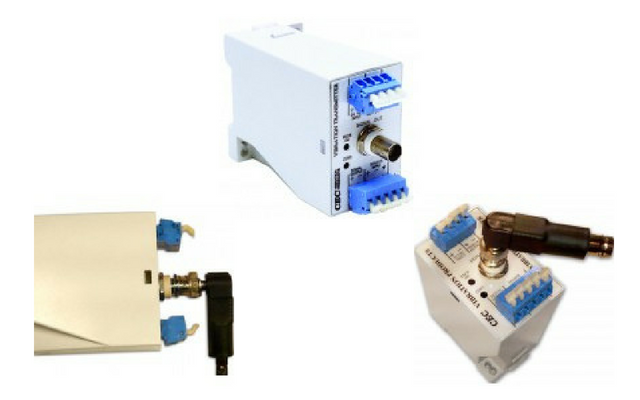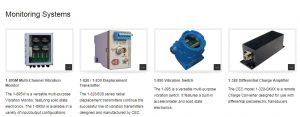Contributor: CEC Vibration Products
When it comes to expensive rotating machinery, there is often a need to identify a problem before it occurs, as catastrophic failures are often orders of magnitude more costly than planned repairs. In place vibration monitoring systems can be a simple and cost-effective means to provide the continuous monitoring of rotating machinery necessary to avert these costly repairs.
Industrial Networks Programmable Logic Controllers (PLC’s) are not new to industrial plants; they have been around for many years. They are the workhorses of industrial automation. However, today’s PLC’s now include networking capabilities based on Ethernet, the same highspeed protocol used in office enterprise networks, which allows improved control and data collection on a plant wide basis.
These network linked PLC’s allow hundreds of monitor and control points to be distributed across a plant and give the plant operator a means to monitor and control the plant from a centralized industrial PC. Optionally, reports can be automatically generated and distributed in a tailor made fashion to suit the various information needs of the corporation either in real time or in batch mode. Installation costs of the network are minimized due to the fact that these systems use simple twisted-pair wires for communicating throughout the plant.
One key to linking up these networked PLC’s is sophisticated software which provides numerous resources for closed-loop control and trend based data analysis. The graphical software packages allow these systems to be integrated with a minimum amount of programming, thus removing he requirement to have an onsite software specialist to configure and maintain them.
Products such as National Instrument’s Fieldpoint system or Automation Directs DL205 PLC provide customizable industrial control using modular, off the shelf components which can be network-linked to create a unified plant wide industrial control and data collection systems. Software packages, like National Instrument’s Lookout and Think & Do Software’s Think & Do, bring the whole system together.
Vibration Monitoring To bring vibration monitoring capabilities to these industrial networks requires a combination of vibration transducers and signal conditioners. In a typical application, the vibration transducer can be mounted on a piece of equipment, the signal brought to a signal conditioner which plugs into one of the PLC analog input channels and monitored from anywhere within the plant.
CEC Vibration Products model 1-808, 1-828 Vibration Transmitter provides a ready made module to link raw vibration information from permanently mounted transducers into a plant-wide vibration monitoring network.
In a typical application, one or more vibration transducers are mounted on the equipment of interest. The vibration signal from these transducers is brought to a vibration transmitter and then into one or more analog input channels of a networked PLC. This incoming data can then be immediately displayed, stored for long term analysis, and be used to signal alarm conditions. Because of the built-in capability for trending in the two earlier mentioned software packages, vibration trends can also be observed.
Summary The need for monitoring of plant vibration trends and emergencies is easily solved with any one of a number of different Ethernet based PLC’s. When transducers and vibration transmitters bring vibration data into these PLC’s, a plant wide vibration monitoring system is easily implemented. Integration of vibration monitoring into a plant wide network can help avert more costly repairs and simplify the process of plant monitoring.




